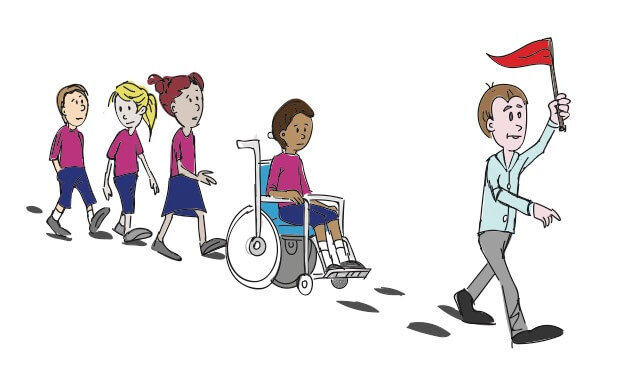ABC of INQUIRY – DEDUCTIVE TEACHING
ABC of INQUIRY – DEDUCTIVE TEACHING
DEDUCTIVE TEACHING: Follow the leader…
Deductive teaching involves the teacher being positioned as the expert, the leader, the centre of the learning. Ideas, information or rules are delivered to the learners and from here the skills are practiced or knowledge is developed for quick recall. Skills and knowledge recall are the focus of this type of teaching. It is rarely collaborative and can leave little room for questioning, experimenting and for the valuing of mistakes as launch-pads for new possibilities.
Learning is often mechanical and rigid. While the teacher is positioned as expert, the learner is positioned as vessel to be filled with information. The teacheris usually positioned astheexpert and ‘Right knowledge’ and answers are predefined and static.
If teachers are invited to see teaching along a spectrum from deductive to inductive teaching, there is room and space to move along this spectrum when and where the need arises. It is connected to balance about making decisions based on the understandings that learners are sharing with us.
There is a time and place for some deductive teaching. When you have a new driver in the car there are certain skills and knowledges they must have in order to succeed and keep themselves and other road users safe. There is limited space on the roads for drivers to experiment. Deductive teaching isarequired to skillup new drivers. However after or before a driving lesson there is room for inductive reflection, debate and exploration to help young drivers explore, question and challenge ideas and their experience. It is during this part of the experience that the learner driver begins to develop and own their decision-making choices. This will help them become responsive drivers whoare quick to adapt and act, rather than just respond and react in unexpected driving scenarios.
There might be a time and place for deductive teaching for certain students at certain times, but it should be carefully reviewed if this is the dominant approach to teaching, as it limits student agency, ownership, and the development of rigorous understandings that are adaptable and transferable.
An interesting twist on deductive teaching would be to take the position of expert and deliver a generalisation, but then invite/challenge the learners to reflect on this, test the claims, and find a way to prove or disprove the generalisation. Followed by an opportunity topresent their understandings, with evidence and examples,ofthehow and whythis generalisation would or wouldn’t work in the world beyond the classroom.
Please see earlier BeConWiz blogs that provide more details and examples on how inductive or deductive teaching might look or play itself out in different classrooms. In these blogs the DIG model was used to examine and deconstruct ideas about teaching across a spectrum of learning situations.
- What is constructivist teaching? An introduction to Inquiry Part 1
- What is constructivist teaching? An introduction to inquiry Part 2The ideas applied to teaching spelling and word studies
BCW will now use ‘They — themself’ as a singular, gender-neutral pronoun in all subsequent material generated on our website.
All Rights Reserved © 2018 Beconwiz All ideas and illustrations are the property of BeConWiz.

BeConWiz Ideas and Thoughts by Carla Holmes, Mary-Denese Holmes, Pearl Holmes is licensed under a Creative Commons Attribution-NonCommercial-NoDerivatives 4.0 International License.
Based on a work at https://beconwiz.com.
Permissions beyond the scope of this license may be available at https://beconwiz.com.

